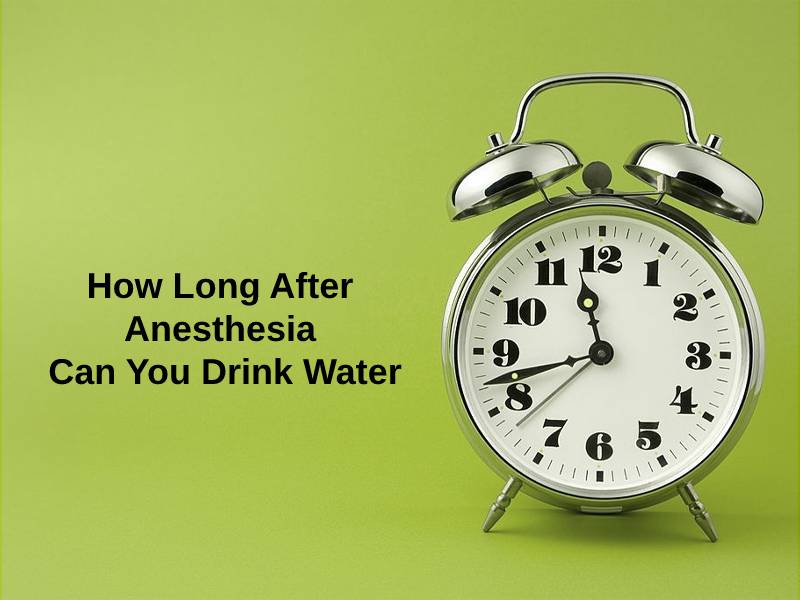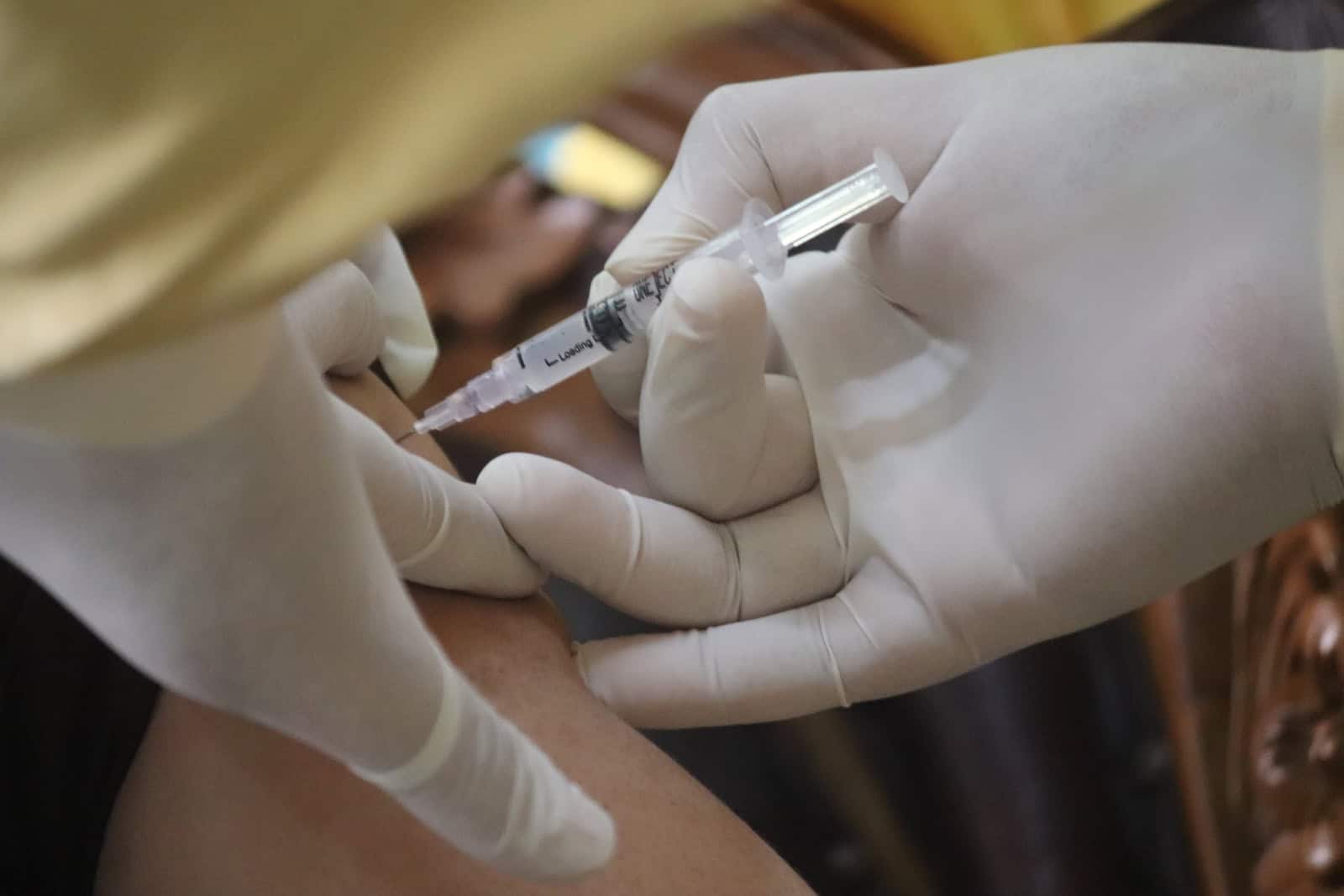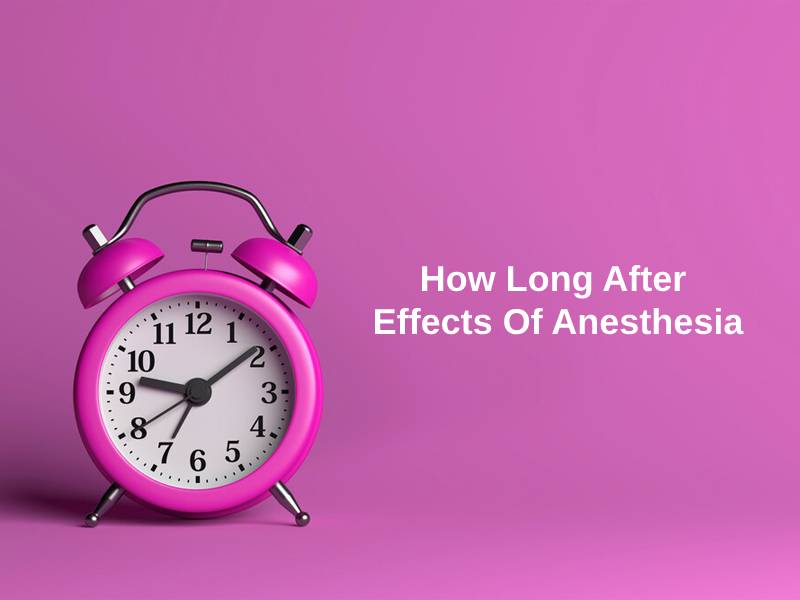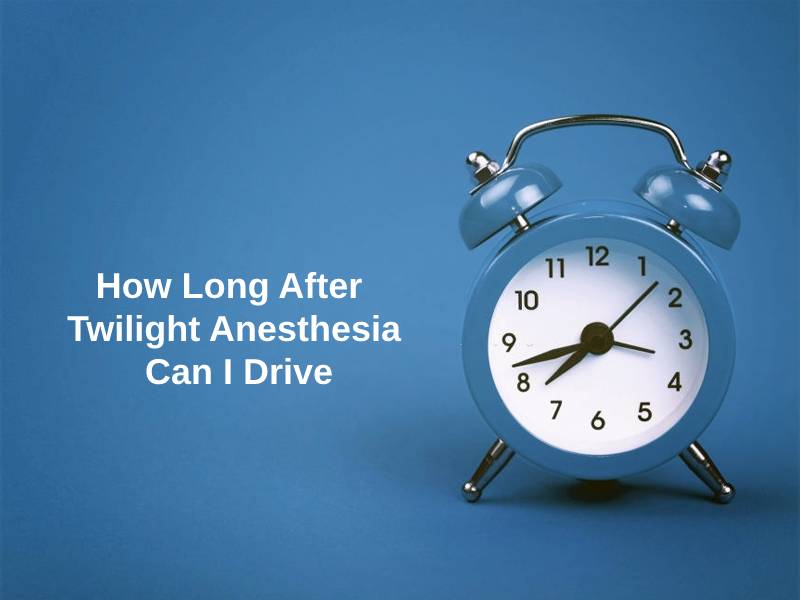Exact Answer: At least 1 hour
Anesthesia is the name given to the process of using drugs known as anesthetics, in order to prevent a patient from feeling pain while undergoing any medical procedure.
Primarily, there are four kinds of anesthesia: local anesthesia, regional anesthesia, general anesthesia, and monitored anesthesia care (MAC). Each of these types has its own uses and ways of administering them.
Some anesthetics work by numbing only a specific part of the body, while others numb many parts, or even put you to sleep during the procedures.
Anesthesia treatment is handled by anesthesiologists, who are professionally trained doctors who are experienced in administering anesthesia.

How Long After Anesthesia Can You Drink Water?
| Type of anesthesia | Time after surgery to drink water |
| Spinal anesthesia, regional anesthesia, local anesthesia | Immediately after surgery |
| General anesthesia | At least an hour |
| Anesthesia for surgeries in the gastrointestinal area | 6-8 hours/24-72 hours |
The strongest kind of anesthesia is known as general anesthesia. Unlike other types, it makes a person completely unaware. It is used in major surgical procedures that take a long time to complete, and those that would be quite painful for the patient. An example of such a surgery is the removal of the appendix. It is known for essentially paralyzing the patient’s muscles, knocking them unconscious for a particular period of time, depending on the dosage of anesthetics that is administered. Since all the muscles are paralyzed for that particular time frame including the ones that enable breathing, patients would need a ventilator in order to breathe during surgery. At least an hour has to pass after the surgery, to drink water.
Commonly used for minor medical procedures such as tooth extraction or skin biopsy, local anesthesia works by numbing only a small part of the body at a time. This is what sets it apart from general anesthesia, as local anesthesia does not induce sleep. It numbs the area by halting the communication of pain from the nerves that are located in the affected part. Water can be taken immediately after the procedure ends.

Monitored Anesthesia Care allows for a more controlled state of sedation for the patient. Usually determined by an anesthesiologist, the patient can be completely sedated, fairly sedated, or only mildly sedated. Typically, the patient is aware to an extent but is still very relaxed and calm. The degree of sedation is determined according to the type of surgery, and the patient’s health.
Regional anesthesia is much like local anesthesia, except that it is used to numb a large part of the body. Similarly, it works by stopping the nerves at the affected area from sending out the sensation of pain, without rendering the patient unconscious. Usually, you can drink water right after the surgery ends, and after the anesthesia wears off.
Why Does It Take That Long To Drink Water After Anesthesia?
For general anesthesia, the patient is sedated first, in order to insert the breathing tube for the ventilator. Since the lungs cannot work by themselves without the help of the muscles that are now paralyzed, the ventilator is connected. The endotracheal tube will be inserted into the airways and is connected to the bigger tube that leads to the ventilator. This allows the body to receive oxygen from the machine. After the surgery is finished, the breathing tube is immediately removed.
Local anesthetics come in two different types: topical and injections. Topical anesthetics are applied onto the mucus membranes or directly onto the skin. They are applied in the form of gels, sprays, creams, fluids, and patches. Injectable local anesthetics are commonly used for dental procedures like root canals, mole or wart removal, and more.
For monitored anesthesia care, you will be injected with the pain and sedative medicines, along with fluids. This is using an intravenous catheter (IV) that is inserted into a vein. It is used for outpatient surgeries.
Regional anesthesia is when local anesthetics are injected near a nerve, or a bundle of nerves, in order to stop the communication of pain from the entire area that is being supplied by a particular nerve or bundle of nerves. This helps numb a larger part of the body like the abdomen, or leg, or arm.

It is advised to wait before drinking water after anesthesia because there are many complications like aspiration and choking that might happen. Patients are allowed to drink water only after they have completely regained consciousness, as drinking before this time can result in accidentally inhaling the water into the lungs, known as aspiration. This can be dangerous for the body.
Another reason is that when the patient is extubated after surgery with general anesthesia, the muscles are still uncoordinated and the airways and the throat lining can be bruised, irritated, and swollen up. This can lead to choking if you drink water before you recover.
You are normally asked to wait to drink water so your muscles can recover from the paralysis and come back to their normal functioning state, so they can process the intake of water.
Conclusion
Since most anesthetics remain in the body for up to 24 hours after they are first administered, it is important to follow the post-operative instructions. You may not be yourself for the first few hours, and so you must be accompanied by a responsible adult after surgery.
Driving is prohibited for at least a day after anesthesia is administered. In addition, it is advised to start with liquids right after surgery, and then gradually add lighter foods to eat. Also, avoid alcohol until your physician clears it.
Moreover, do not consume any medications or drugs on your own, without consulting a health professional first, as the medication can interact with the anesthesia and cause unpleasant side effects.





















The article provides essential information in a clear and concise manner. It’s a valuable resource for individuals interested in anesthesia and its implications.
I concur. The insights provided in this article are highly enlightening, and they contribute significantly to the discourse on anesthesia.
Absolutely, the article’s elucidation of anesthesia is incredibly beneficial for readers looking to deepen their understanding of this subject.
The details about the different types of anesthesia and the timeframes for drinking water after surgery are very helpful.
I agree, this article deepened my understanding of anesthesia and its effects on the body.
I appreciate the medical insights provided in this article. It’s essential knowledge for patients undergoing surgical procedures.
I never knew there were so many different types of anesthesia. This article has broadened my understanding of how anesthesia works.
Absolutely! The information provided gives a comprehensive overview of the role of anesthesia in various medical procedures.
The article’s focus on the different types of anesthesia, their effects, and the safety guidelines for drinking water after anesthesia is commendable.
Absolutely, this article presents important information regarding anesthesia and its implications for patients.
Informative read. I appreciate the detailed explanation of different types of anesthesia and their effects on patients.
The article is thorough and enlightening. It successfully sheds light on the nuances of different anesthesia types and their implications for patients undergoing medical procedures.
Absolutely, this article offers a comprehensive understanding of anesthesia, which is essential for individuals preparing for medical procedures.
The article’s exploration of anesthesia and the recommended safety precautions provides a valuable resource for individuals seeking an in-depth understanding of this subject.
Absolutely, the article’s detailed insights on anesthesia and the post-anesthesia period are highly informative and beneficial for readers.
I wholeheartedly agree. This article presents essential information on anesthesia and its implications, contributing significantly to reader knowledge.
It’s crucial to educate individuals about anesthesia and the related precautions. This article successfully addresses these important aspects.
I couldn’t agree more. The comprehensive nature of this article is valuable for individuals seeking clarity on anesthesia.
Very detailed and informative article! It’s good to know the different types of anesthesia and when it is safe to drink water after undergoing surgery.
I found this article to be enlightening and well-researched. It’s always beneficial to have this kind of knowledge when it comes to medical procedures.
Definitely! The article does a great job of explaining complex medical procedures in an easy to understand way.
The explanation of general anesthesia was particularly interesting. It’s fascinating to learn about how it causes a complete unawareness in patients during major surgeries.
I agree, the description of how general anesthesia works was eye-opening. This article provides valuable information on a complex subject.